Local developer and business owner Travis Schneider stands on a slope beneath his partially built dream home, where construction has been halted for close to nine months due to permit violations. | Photos by Andrew Goff.
###
Travis Schneider is optimistic.
He’s optimistic about the future of his family’s partially built dream home despite a snowballing collection of permit violations, ongoing conflict with local tribes and a very public controversy over racist comments Humboldt County Planning Commission Chair Alan Bongio made while advocating for Schneider’s permits.
On Friday, Schneider offered a tour around his property and through the plywood and two-by-four-six framing of his home construction site, which has sat exposed to the elements for close to a year thanks to a stop-work order the county Planning Department issued in January. The wood has begun to turn gray, but Schneider said, “My concern for the materials is secondary to resolving the outstanding issues.”
Over the course of our conversation he said more than once that he believes his various permit violations can be remedied, that the myriad objections and concerns raised by tribes, the California Coastal Commission, county planning staff and the public can be resolved if everyone comes together in good faith.
This avowed optimism isn’t limited to his current troubles. It’s part of his philosophy of life.
“I’m a country music listener,” Schneider said while standing in the dry, knee-high grass beneath his construction site, a spot offering a panoramic view of the Fay Slough Wildlife Area. “One of my favorite songs is ‘Most People Are Good,’ and I think that’s true, you know?” Schneider said. “I think we all have moments where we have lapses and moments we’re not proud of and that we would like to do over. But at the end of the day I think our similarities are far greater than our differences.”
The opening verse of “Most People Are Good,” a chart-topping 2017 hit from country singer Luke Bryan, goes like this:
I believe kids oughta stay kids
As long as they can
Turn off the screen, go climb a tree
Get dirt on their hands
I believe we gotta forgive and make amends
‘Cause nobody gets a second chance
To make new old friends
I believe in working hard for what you’ve got
Even if it don’t add up to a hell of a lot
Schneider owns Pacific Affiliates, a Eureka-based civil engineering firm with a warehouse and a dock on Humboldt Bay bearing his last name. He’s also a local developer who has built commercial properties and dozens of homes across the county. Judging by the one he’s trying to build for his own family, Schneider could add a lyric to that Luke Bryan song: Sometimes one’s work does add up to a hell of a lot. The structure is simply massive, much larger than county officials previously recognized.
The northern wing of the home includes a multi-car garage and a connected two-story structure.
###
While some of Schneider’s permit problems date back more than nine months, recent scrutiny and some investigative reporting — including a series of stories by Thadeus Greenson at the North Coast Journal — have revealed even more problems.
For example, Schneider’s coastal development permit application called for an 8,000-square-foot home with a 1,000-square-foot natural light cellar, and in all county proceedings to date, that’s the size of structure officials have discussed. In reality, however, the home under construction is more than twice that size: 20,817 square feet, according to Humboldt County Planning and Building Director John Ford.
Standing near stacks of construction materials in what may someday be his front yard, Schneider said that larger square-footage figure is misleading.
“The structure is that big,” he acknowledged, “[but] the habitable home space is considerably less.”
Schneider draws a distinction between the “conditioned” or “habitable” portions of his home and everything else, including the cellar, a gymnasium, a recreation room, a covered porch, a covered patio and multiple garages. He argued that only the habitable rooms, which he said measure 7,817 square feet, should be factored into the home’s square footage.
Ford disagrees. In a phone conversation on Monday, the planning director said that the uniform building code does include such a distinction, though it’s part of Title 24, a provision addressing building energy efficiency standards. Schneider’s building plans do have calculations showing conditions and non-conditioned areas, but Ford said that doesn’t mean the non-conditioned areas don’t count.
“The conditioned rooms are for Title 24 energy compliance, not for determining the size of the structure,” Ford said. (He also said the plans show 11,271 square feet of conditioned space, not 7,817.)
Inexplicably, an as-yet-unidentified county planner approved Schneider’s building plans, even though they call for a home that’s 20,817 square feet — far in excess of the size allowed under his coastal development permit.
Building materials lean against an unfinished wall.
###
Asked to clarify why he doesn’t include so much of his home’s layout in the square footage calculation, Schneider said it’s common practice to exclude structures such as garages.
“I can’t speak to how the code defines it,” he said. “But we do have a lot of garage space; we have a covered porch; we have a covered outdoor patio down below. … We have a lot of space that’s included in that 20,000 square feet that isn’t reflective of the habitable space.”
Schneider’s 3.5-acre parcel lies at the end of Walker Point Road, accessed via the Indianola cutoff. It sits on a knoll overlooking the Fay Slough Wildlife Area, and the panoramic vista includes views of the Murray Field Airport, Harper Motors, Hwy. 101 and Arcata Bay. The Wiyot People called this region Da’dedi’lhl, meaning “sunshine,” and Schneider’s property includes an area designated as an archaeological site and tribal cultural resource.
“If you look at historical photos, this site was excavated to [supply] fill for Harper Motors and Murray Field,” Schneider said.
Late last year, county staff learned that Schneider had violated the terms of his coastal development permit by laying down an unpermitted access road through environmentally sensitive habitat and using a CAT 310 excavator to clear native blackberries and other foliage, potentially damaging the tribal cultural resource. He had also laid the home’s foundation in a spot that didn’t quite align with the approved site plans.
“There was an error made when I laid out the home survey,” Schneider explained on Friday. At a certain point, he said, the home’s layout got rotated, shifting its alignment with the underlying property. Surveys conducted later revealed that the home’s footprint had been placed within 100 feet of a designated wetland, in violation of the county’s local coastal plan. The misalignment also placed the project within the jurisdiction of the California Coastal Commission, and that agency’s staff have serious concerns about the permit violations as well as the home’s compatibility with its surroundings, according to the Journal.
The upper floor of Schneider’s house overlooks the Fay Slough Wildlife Area.
###
Schneider said this was a regrettable mistake. “When I checked in with one of the survey points, everything checked out just fine,” he said. “In hindsight, I should have checked in with more.”
He also said that he simply wasn’t aware that he couldn’t build a temporary access road on the property. Asked to point out the road’s location, Schneider walked across the cement slab of his home’s foundation, passing through several framed doorways until he arrived in what’s slated to be a bedroom for one of his four children. He pointed down to the gravel road, which runs up a gradual slope to the southeast corner of his home’s foundation.
“We felt that it was a temporary road in nature and it, you know, was ultimately going to be removed,” he said by way of explanation.
The road was cut into a prohibited area below the property’s 40-foot contour line and within the 100-foot wetland setback. In a letter to the Planning Commission Schneider said the road was built to allow easier installation of siding and windows. Nearly a year later neither of those elements have been installed, and there’s no telling when or even if he’ll be able to do so.
Schneider led us on a tour of the house, pointing out the east-facing entrance before leading us up some temporary stairs, through a future wall and into the home’s southwestern wing, pointing out rooms as we walked.
“So this is the living room, kitchen — that’s just a faux wall, just to hold the trusses.” Another space will be a den for his kids, whose four bedrooms, closets and bathroom are clustered together at the southern end of the structure.
Walking north to the other end we passed holes slated for stairways leading to the lower floor of the house. The home is partially cut into the slope, giving the impression from Walker Point Road that it’s all one level, though when seen from the west — which is possible from both Myrtle Avenue and Hwy. 101 — you can appreciate the true size of the house.
The lower level includes the cellar, a gym, garage space and a recreation area that’s built as a large room that’s missing its exterior wall. The missing wall would allow an unobstructed view of the property’s panoramic vista while giving the Schneider kids the ability to play in the fresh air even during Humboldt County’s long periods of inclement weather.
“Pantry,” Schneider said, continuing the tour. The master bedroom sits at the northeast corner, near another multi-car garage. The master bedroom is flanked by a large closet and bathroom. Schneider backtracked and turned a corner into a new area of the house, pointing out the laundry room, a powder room and a guest bedroom.
###
The southeastern corner of the structure includes rooms for the Schneiders’ four kids and a downstairs recreation room that opens to the outdoors. About 20 square feet of this corner were built within 100 feet of a wetland, violating his permit.
###
According to a county staff report, Schneider removed more than an acre of native blackberry bushes as well as a 16-inch willow tree and four alders ranging in size from three to 14 inches.
Again, he pleaded ignorance, saying he wasn’t aware that mowing was prohibited per the terms of his coastal development permit.
“We specifically didn’t mow any trees,” Schneider insisted. “There were some trees that were removed on the other side [of the house] that my kids chopped down as part of a tree fort. But, fortunately, they’re already growing back.”
He suggested that the unpermitted vegetation removal may actually have helped the foliage. “In some regards, similar to your orchard, it’s as if the trimming and the pruning almost helped vegetation, spurred more vegetation growth,” he said.
Asked why the county staff report said trees had been removed, Schneider said, “I can show ya.” He led us down the western slope beyond the concrete foundation to show the area he cleared. As we descended through the dry grass a group of small birds flushed from a willow cluster.
“Here’s the trees that were cut,” he said, holding a branch from a tangle of woody foliage between his fingers. “They’re regrowing.” He walked a few more steps and pointed to more branches. “This is the regrowth. This is all the regrowth. Even the alders that my kids had chopped are continuing to grow.”
Asked to point out the archaeological site designated a tribal cultural resource, Schneider walked another 40 feet south to a spot where little orange flags on thin metal rods had been stuck into the soil.
The potential damage to this spot has led to prolonged and complex negotiations with three Wiyot-area tribes — the Bear River Band of the Rohnerville Rancheria, the Blue Lake Rancheria and the Wiyot Tribe. [DISCLOSURE: The Blue Lake Rancheria is a minority owner in the Outpost’s parent company, Lost Coast Communications, Inc.]
After the site plans were rotated, the southeast corner of the house was built within 100 feet of a designated wetland, violating the terms of Schneider’s coastal development permit.
###
After the disturbance was reported to all parties, the tribes asked for an archaeologist to conduct a survey. A “significant number of artifacts” were identified during the limited survey effort, and the archaeologist determined that the site is eligible for listing to the California Register of Historic Resources because it could “address a range of scientific research questions,” according to an August staff report.
However, the archaeologist also concluded that the heavy equipment and vegetation removal did not affect the integrity of the site’s scientific value and found no evidence of damage to cultural material.
Still, the Wiyot Tribe and the Blue Lake Rancheria determined that disturbance to the site has been “culturally significant” and they’ve asked for more thorough investigations, including an excavation, plus stronger protection measures to prevent further damage. The Bear River Band objects to the request for excavation. Negotiations are ongoing.
“The most common knowledge for this site is that it was used for cooking,” Schneider said, though he also noted that he has not been in direct communication with the tribes.
Yet another permit issue: In late August, a supervisor in the county’s Public Health Division notified Senior Planner Cliff Johnson via email that Schneider never obtained an onsite wastewater treatment system permit, as reported in the Journal last month.
Schneider said he hasn’t gotten to the bottom of that issue but, again, he’s optimistic that it can be resolved.
“Septic is approved for this whole development,” he said, referring to the Mid-City Ranch subdivision on Walker Point Road, created in the 1980s. “There was wet-weather monitoring [and] perc testing done for this whole development. There was not a site-specific septic permit issued for this site. [But] septic is very viable for this site. … And I don’t know if that’s a requirement in order to pull the permit or if it can just merely be a deferred submittal.”
Humboldt County Code requires that a sewage treatment system be approved prior to beginning construction of any occupied building. Asked whether he should have done that work prior to getting his building permit, Schneider said, “I don’t know what the protocol is on that. … Once again, something I haven’t dug into extensively.”
Schneider has also brought significantly more fill soil onto the property than the 1,500 cubic yards specified in his coastal development permit, though county planning staff appears to have made another error by issuing Schneider a grading permit allowing ten times that amount: 15,000 cubic yards.
“We requested 15,000 yards in our original plan,” Schneider said. He alleged that the 1,500 figure was the result of a typo in a staff report. Ford confirmed to the Outpost that Schneider’s original application did identify 15,000 cubic yards of fill, and he couldn’t say for sure how that 1,500 figure came about. Schneider said he doesn’t know exactly how much dirt he’s actually brought onto the property but he estimated that it’s somewhere between 3,000 and 4,000 cubic yards.
A second story was recently added to a commercial building owned by Schneider. | Submitted photo.
###
Schneider’s recent permit violations aren’t limited to the site of his dream home. County staff was recently tipped off about a permit violation at the KOA campground and RV park along Hwy. 101 near Bracut Lumber. Schneider owns the property and had obtained a re-roofing permit for a commercial building, but rather than simply re-roofing the facility, an entire second story was built atop two rental units.
When first asked about this, Schneider said he’d like to go off the record. When asked why he didn’t want to address the matter on the record he said he’d need to think about it, but eventually he acknowledged building the second story on the building despite only getting a re-roofing permit.
“We’re actively working with the county on that,” he said, adding that the violation was just brought to his attention in the last couple of weeks.
The Outpost first learned about it in mid-August and we reached out to the county for more information. Ford replied via email, saying the RV park is regulated by the State Department of Housing and Community Development.
“We have reported the violation to the state,” Ford said in an August 20 email. “It is uncertain whether they will take action on it or refer it back to the County.”
Asked about it again on Monday, Ford said the county does have jurisdiction over the coastal development permit. His staff recently sent Schneider a letter notifying him that he needs to obtain both a building permit and a coastal development permit for the already-completed construction.
Was this another case in which Schneider simply didn’t know that he was breaking the rules?
“Well, we were transparent as far as the reroof permit was concerned,” he said. “We didn’t expect to have to get a full CDP to expand the two living quarters up there. We didn’t change the footprint of the structure.”
By the end of the tour we were standing on the slope beneath the property. We asked Schneider what he thinks about the ongoing controversy surrounding Bongio, to whom he’s related via marriage. (Schneider’s wife’s aunt, Denise Bode, is Bongio’s sister, a connection that Schneider downplayed as typical of residents in a small community, akin to a game Six Degrees of Kevin Bacon. They know each other but aren’t close friends, he said.)
“I think Alan made a mistake. I think he used some terms out of context, and the delivery was not appropriate,” he said. “And I’m hoping that, just like with the situation at our house, we can work towards a resolution on these matters and bring our community together. … I don’t think there’s anything productive in conflict.”
Stakeholders have been working toward a resolution. Wiyot Tribal Administrator Michelle Vassel told the Outpost via email that the tribe recently met with county planning staff, including Ford and Johnson. Tribal staff and Tribal Historic Preservation Officers went over the previously listed conditions of approval, but Vassel said it will take time to iron out the particulars.
“It is the fine detail of who will do what, when and with what funding that still needs to be worked out,” she said. “The problem really is that it is not a quick fix. Tribal Historic Preservation Officers are working together to determine how to best implement those conditions. The permit violations are very extensive and complex.”
The Blue Lake Rancheria declined to comment.
Schneider said he’s been having dialog with his team, evaluating potential mitigation options, and they expect to present something to the county this week.
After our meeting, Schneider emailed a link to the lyrics of “Most People are Good.” The song expresses optimism about human nature, a philosophy that resonates with Schneider as he works toward completing his dream home, though a later verse suggests appreciating life no matter the outcome.
I believe them streets of gold
Are worth the work
But I’d still wanna go
Even if they were paved in dirt
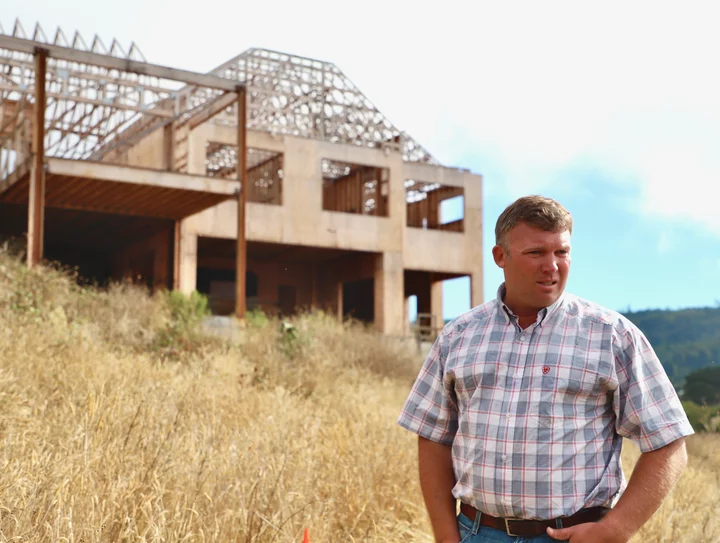
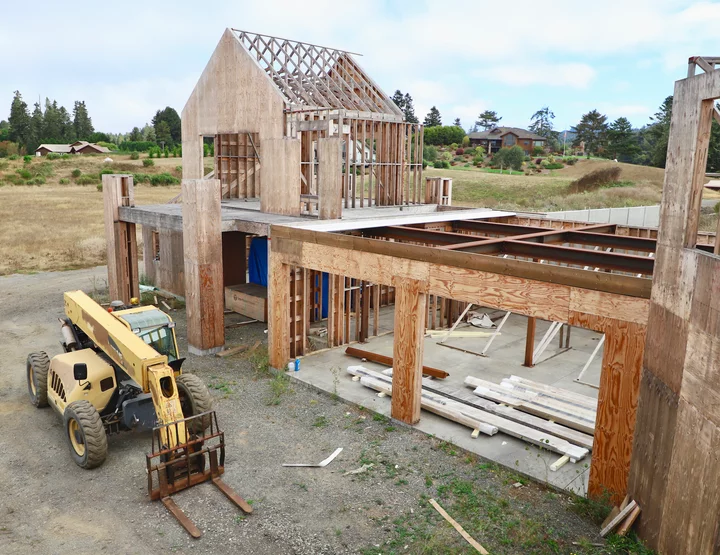

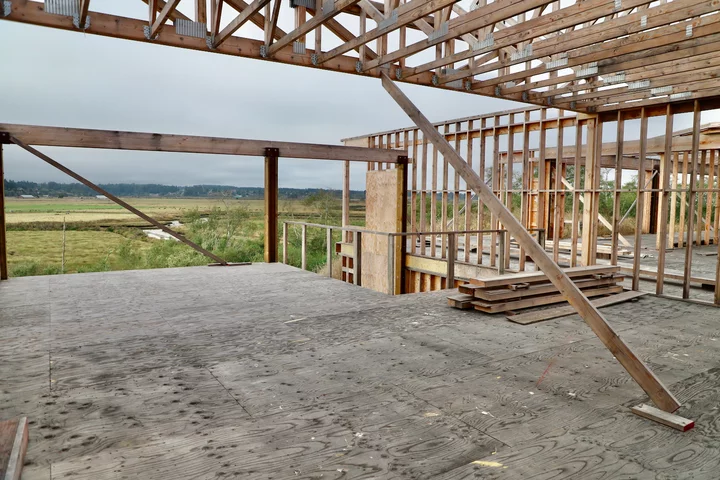

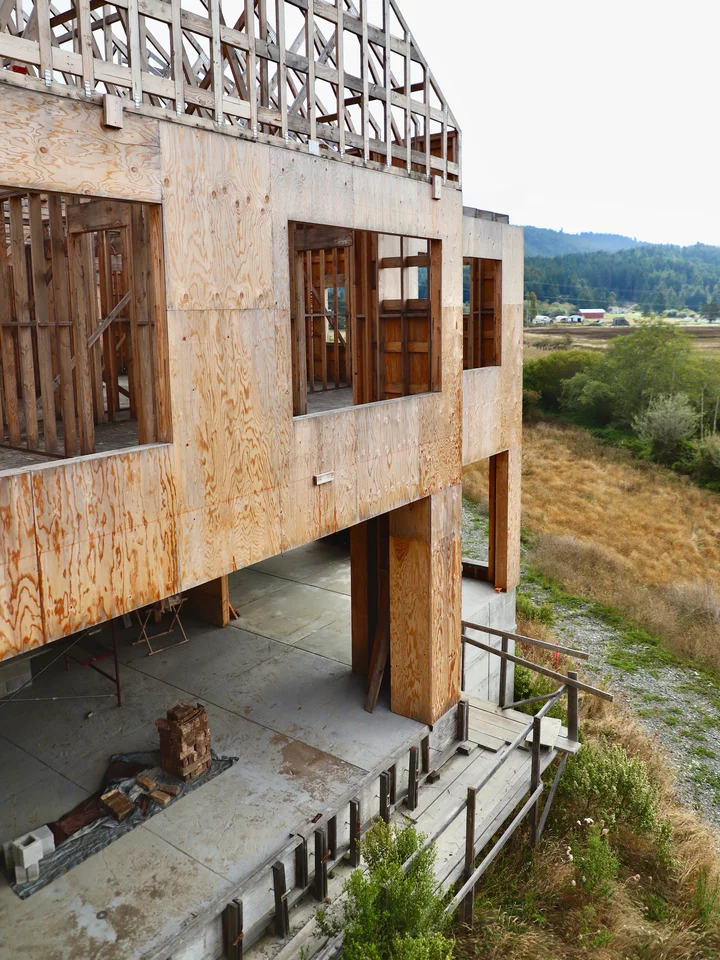

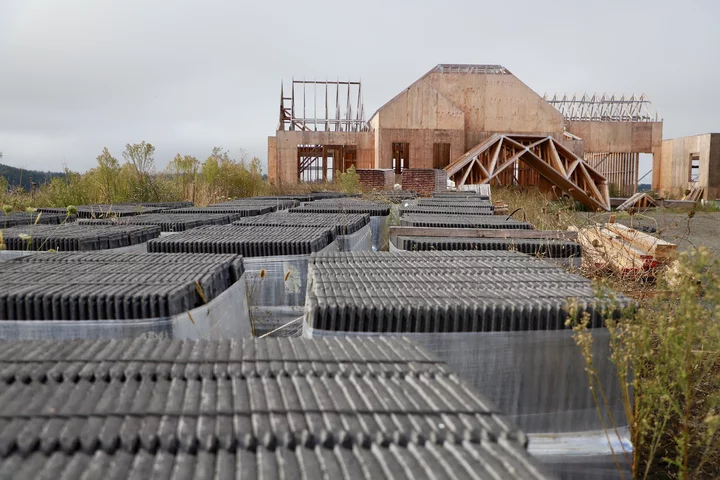
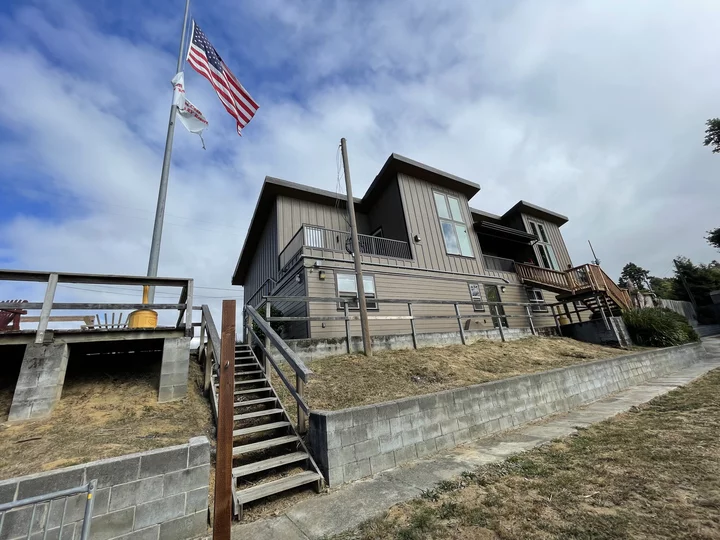

CLICK TO MANAGE